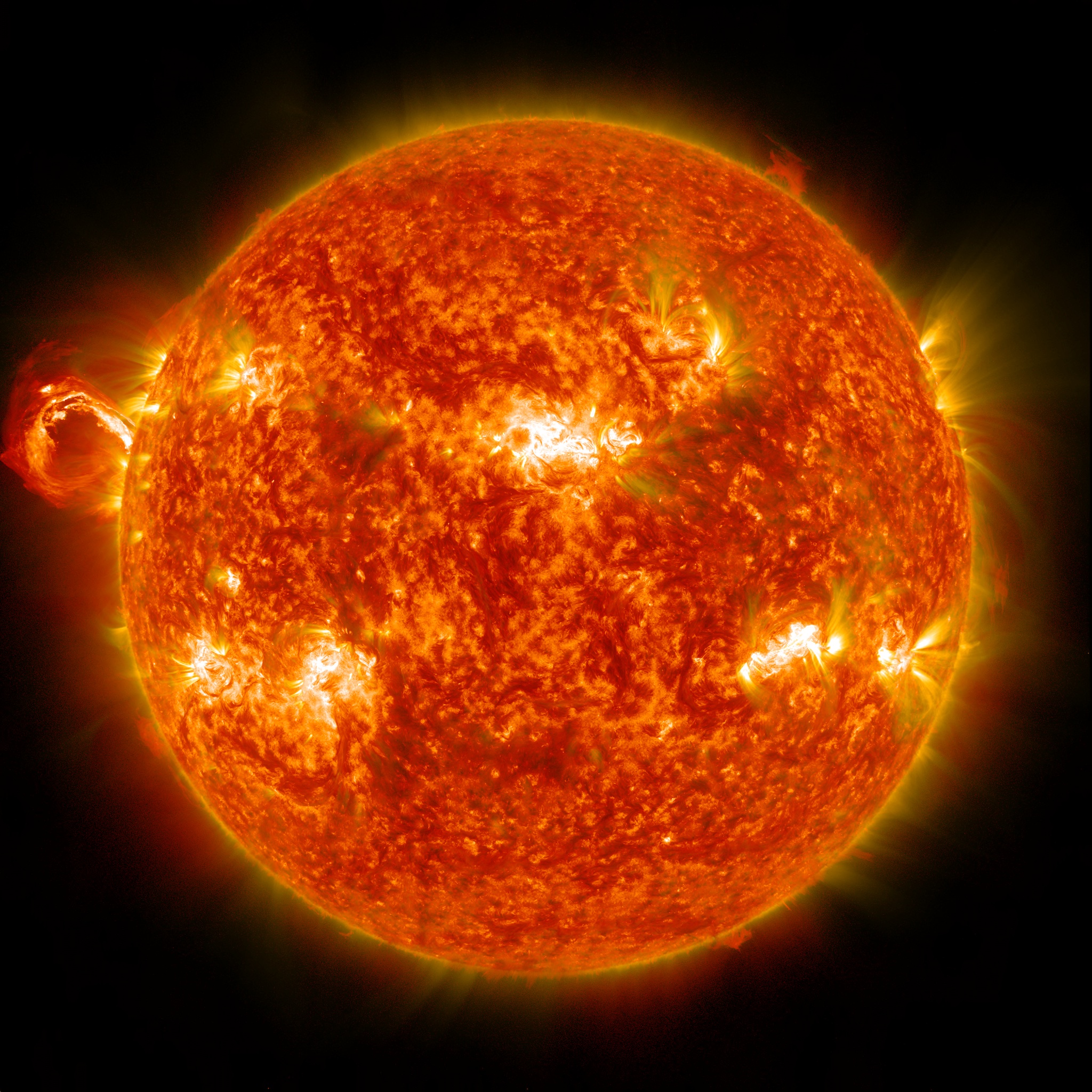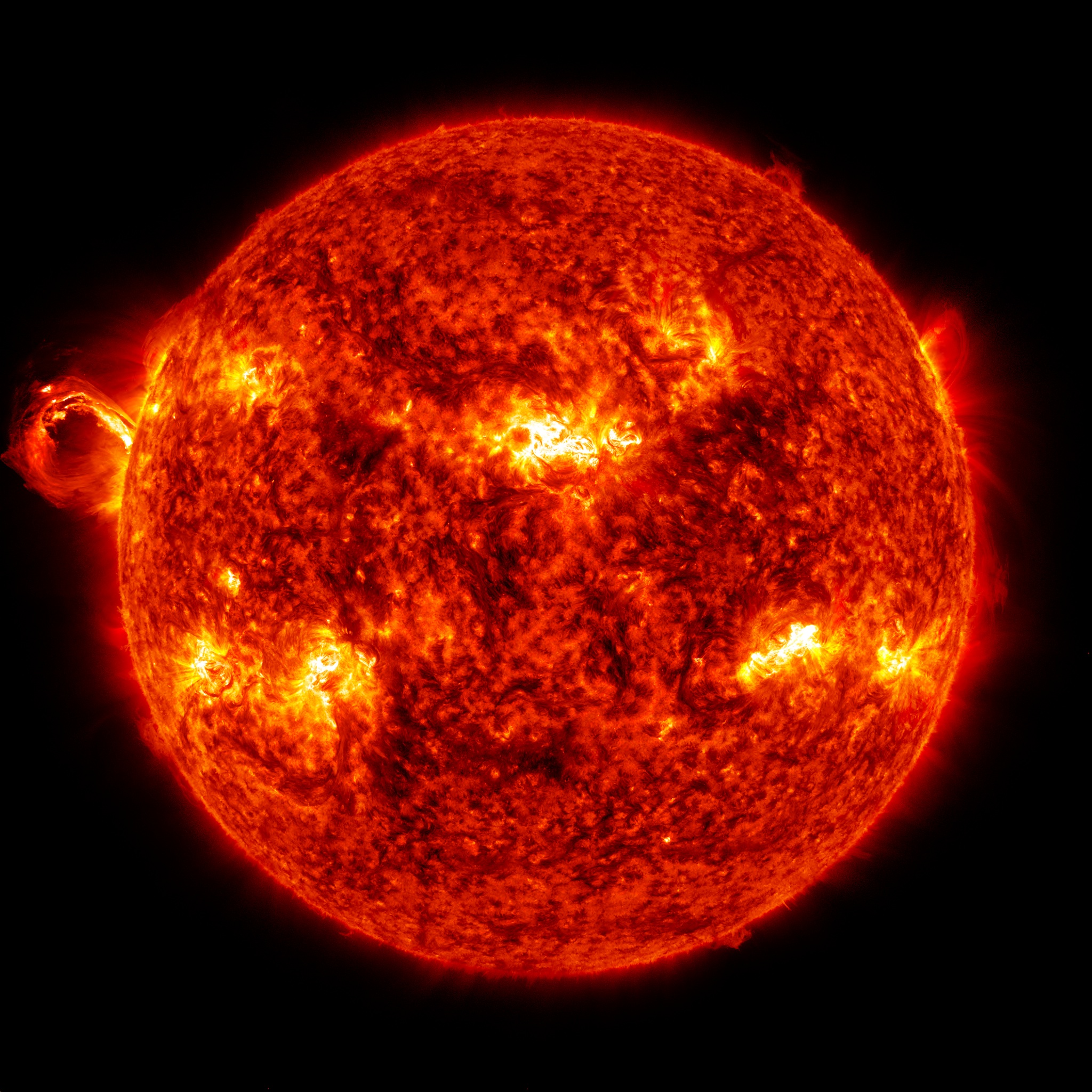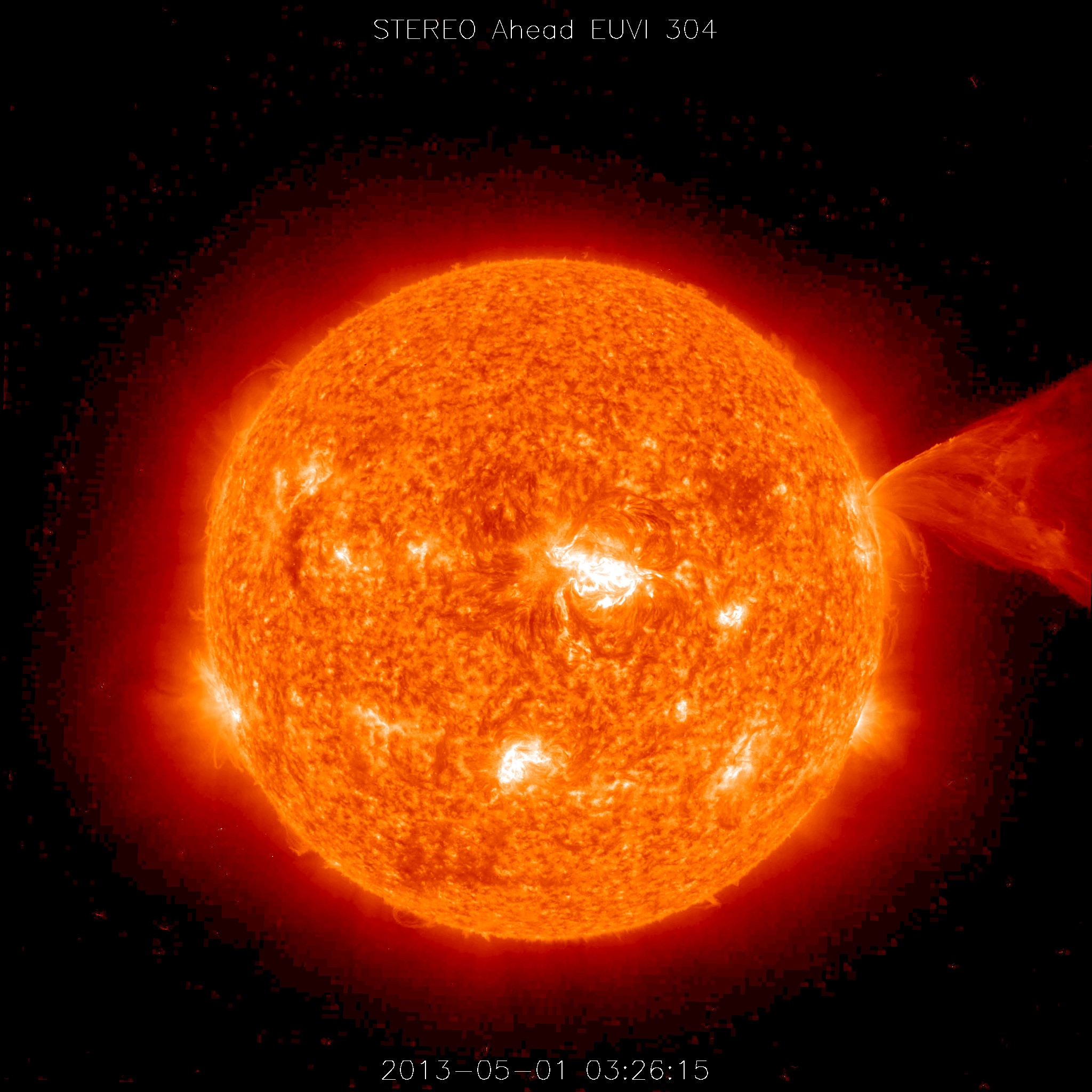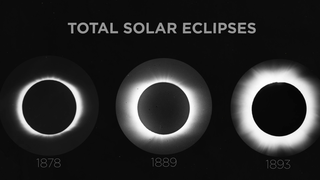NASA's Heliophysics Fleet Captures May 1, 2013 Prominence Eruption and CME
Such eruptions soon leave SDO's field of view, but other satellites in NASA's Heliophysics fleet can pick them up, tracking such space weather to determine if they are headed toward Earth or spacecraft near other planets. With advance warning, many space assets can be put into safe mode and protect themselves from the effects of such particle radiation.
In addition to the images captured by SDO, the May 1, 2013 CME was also observed by the ESA/NASA Solar and Heliospheric Observatory (SOHO). SOHO houses two overlapping coronagraphs—telescopes where the bright sun is blocked by a disk so it doesn't overpower the fainter solar atmosphere—and they both saw the CME continue outward. The LASCO C2 coronagraph shows the region out to about 2.5 million miles. The LASCO C3 coronagraph expands even farther out to around 13.5 million miles. Both of these instruments show the CME as it expands and becomes fainter on its trip away from the sun.
NASA's Solar Terrestrial Relations Observatory (STEREO) Ahead satellite saw the eruption from a very different angle. It, along with its twin STEREO Behind, is orbiting at a similar distance as Earth. STEREO-A orbits slightly faster than Earth and STEREO-B orbits slightly slower. Currently, STEREO-A is more than two-thirds of the way to being directly behind the sun, and has a view of the far side of the sun. From this perspective, the CME came off the right side of the sun. STEREO has an extreme ultraviolet camera similar to SDO's, but it also has coronagraphs like SOHO. As a result, using its two inner coronagraphs, it was able to track the CME from the solar surface out to 6.3 million miles.
Working together, such missions provide excellent coverage of a wide variety of solar events, a wealth of scientific data—and lots of beautiful imagery.
Watch this video on YouTube.



Used Elsewhere In
Related
Credits
Tom Bridgman (Global Science and Technology, Inc.): Animator
Scott Wiessinger (USRA): Video Editor
Scott Wiessinger (USRA): Producer
Scott Wiessinger (USRA): Writer
Karen Fox (ADNET Systems, Inc.): Writer
NASA's Goddard Space Flight Center. However, individual items should be credited as indicated above.
https://svs.gsfc.nasa.gov/10785
Missions:
SDO
SOHO
STEREO
Data Used:
SOHO
NASA and ESAAmong the SOHO instruments is the Michelson Doppler Interferometer (MDI) and the Extreme ultraviolet Imaging Telescope (EIT).
SOHO/Large Angle Spectrometric COronagraph (LASCO)/C2 also referred to as: LASCO/C2
NASA and ESASOHO/Large Angle Spectrometric COronagraph (LASCO)/C3 also referred to as: LASCO/C3
NASA and ESASTEREO
STEREO-A/Extreme UltraViolet Imager (EUVI)
STEREO-A/Coronograph 1 (COR1)
STEREO-A/Coronograph 2 (COR2)
SDO/AIA/304 Filter also referred to as: AIA 304
JOINT SCIENCE OPERATIONS CENTERThis item is part of this series:
Narrated Movies
Goddard TV Tape:
G2013-048 -- Helio Fleet View of May 1 Prominence Eruption
Keywords:
SVS >> HDTV
SVS >> SOHO
SVS >> Solar Wind
GCMD >> Earth Science >> Sun-earth Interactions
GCMD >> Earth Science >> Sun-earth Interactions >> Solar Activity >> Solar Flares
GCMD >> Earth Science >> Sun-earth Interactions >> Solar Activity >> Solar Ultraviolet
SVS >> Space Weather
SVS >> Coronagraph
SVS >> SDO
SVS >> Solar Dynamics Observatory
SVS >> Heliophysics
SVS >> STEREO
SVS >> Corona
NASA Science >> Sun
GCMD >> Earth Science >> Sun-earth Interactions >> Solar Activity >> Coronal Mass Ejections
SVS >> Extreme Ultraviolet Imaging
SVS >> EUV Imaging
GCMD keywords can be found on the Internet with the following citation: Olsen, L.M., G. Major, K. Shein, J. Scialdone, S. Ritz, T. Stevens, M. Morahan, A. Aleman, R. Vogel, S. Leicester, H. Weir, M. Meaux, S. Grebas, C.Solomon, M. Holland, T. Northcutt, R. A. Restrepo, R. Bilodeau, 2013. NASA/Global Change Master Directory (GCMD) Earth Science Keywords. Version 8.0.0.0.0













